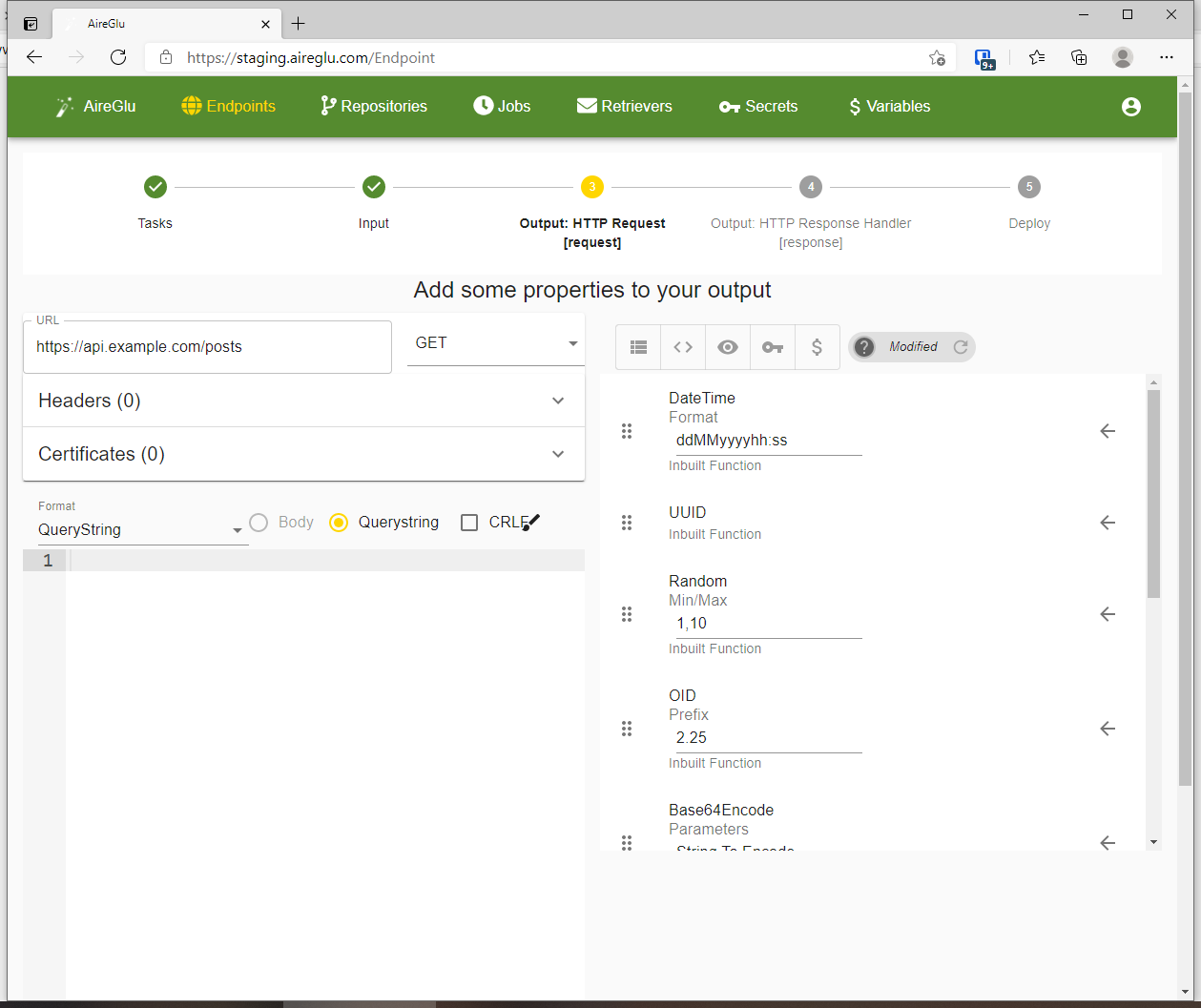Appearance
HTTP Request Task
The HTTP Request task is used to communicate with external services. You can use this to send data to your APIs, or fetch data from other sources.

Creating a Request
Creating a simple request is fairly straightforward. The URL field is the request address, with the HTTP method defined to its right. The following HTTP Verbs are accepted: POST, GET, PATCH, PUT, DELETE, HEAD, OPTIONS, and TRACE. The payload can be provided by URL query string, or by body content.
Retry external requests on failure
If selected, AireGlu will automatically retry the request if it fails due to temporary issues like network problems or server unavailability. It will not retry for errors like authentication failures or invalid input, and will not retry calls to other AireGlu endpoints.
The request will be retried 5 times (in addition to the initial request) with a starting delay of 2 seconds and an exponential backoff.
Headers
Some requests may require additional headers to work correctly. E.g. for authentication. By expanding the Headers section, you can add headers to the request. The Header field contains the Key, and one or more values can be added.
Certificates
Certificates are used for client authentication via Mutual TLS. For the most part, this is not required, but some services may need this. Due to a current issue, you should enter the password for the certificate first, then upload the certificate file itself. The client certificate should be bundled with the private key in a PKCS#12 ( or .pfx) format, and it should be password protected.
Stream Response
It is now possible to receive binary streams from an HTTP Request task, such as when requesting content with media types like image/jpeg or application/pdf.
Limitations
- Streams from an HTTP Request task cannot currently be mapped into another task.
- To return a binary stream from your endpoint, the HTTP Request task must be the final output of the endpoint's execution pipeline.